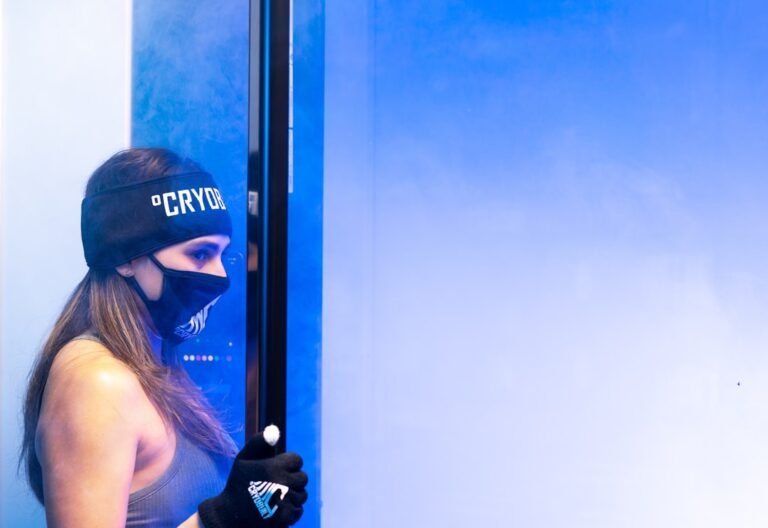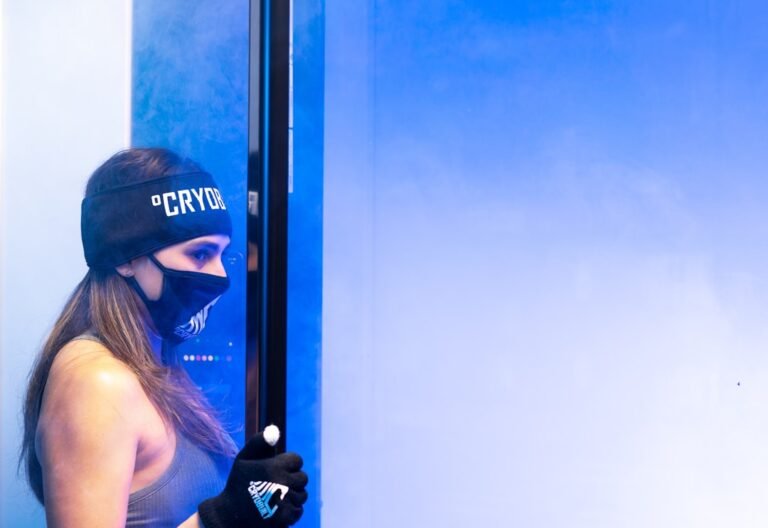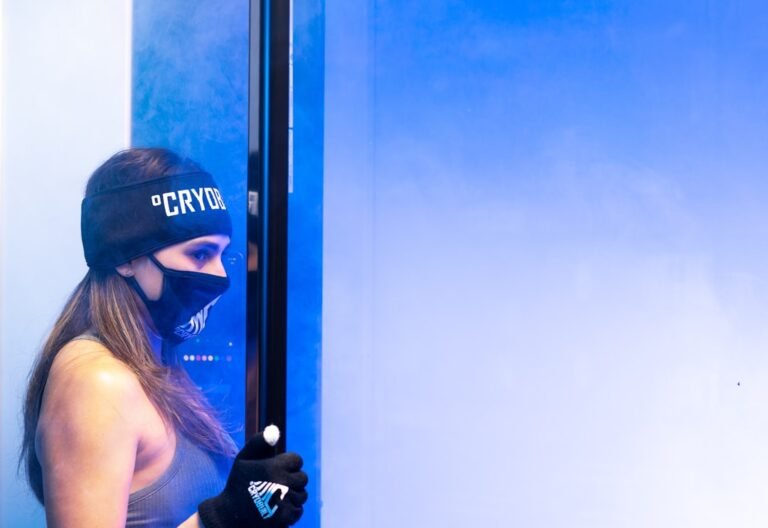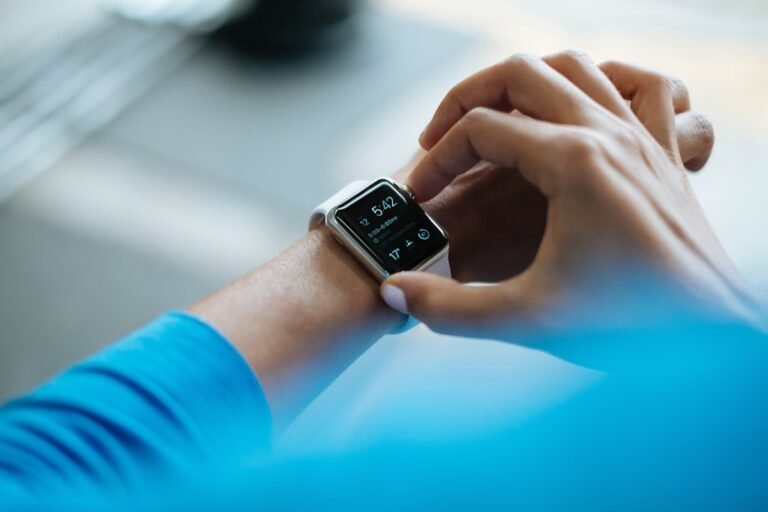Cryotherapy in Sports: Can It Boost Performance for London’s Athletes?
Cryotherapy, derived from the Greek words “cryo” meaning cold and “therapy” meaning treatment, is a technique that involves exposing the body to extremely cold temperatures for therapeutic purposes. It has gained popularity in recent years, particularly in the sports industry, as a means of enhancing athletic performance and aiding in recovery.
The history of cryotherapy dates back to ancient times, with the use of ice packs and cold water immersion for pain relief and inflammation reduction. However, modern cryotherapy as we know it today began in the late 1970s when a Japanese doctor named Toshima Yamaguchi developed a method called whole-body cryotherapy (WBC). This involved immersing the body in a chamber filled with liquid nitrogen vapor, which lowered the skin temperature significantly. Since then, various types of cryotherapy have emerged, including localized cryotherapy and cryofacial treatments.
Summary
- Cryotherapy is a technique that involves exposing the body to extreme cold temperatures for a short period of time.
- Cryotherapy works by triggering the body’s natural healing response, reducing inflammation and promoting recovery.
- Cryotherapy has become increasingly popular in sports, with many athletes using it to improve their performance and speed up their recovery.
- While cryotherapy has many benefits, it also has some risks and limitations, and may not be suitable for everyone.
- The future of cryotherapy in sports looks promising, with new innovations and trends emerging all the time.
The Science Behind Cryotherapy: How It Works
Cryotherapy works by triggering physiological responses in the body through exposure to extreme cold temperatures. When the body is exposed to cold, blood vessels constrict, reducing blood flow to the extremities and redirecting it to vital organs. This process is known as vasoconstriction.
The role of temperature in cryotherapy is crucial. The extreme cold temperatures achieved during cryotherapy sessions can range from -100°C to -150°C (-148°F to -238°F). This rapid decrease in temperature causes the body to go into survival mode, activating various physiological responses. These responses include increased production of endorphins, which are natural painkillers, and anti-inflammatory cytokines that help reduce inflammation.
The benefits of cryotherapy on the body are numerous. It can help reduce muscle soreness and inflammation, improve circulation, boost metabolism, enhance mood, and promote overall well-being. Additionally, cryotherapy has been shown to stimulate collagen production, leading to improved skin elasticity and a more youthful appearance.
Cryotherapy in Sports: A Game-Changing Technique
Cryotherapy has become increasingly popular in the sports industry due to its potential benefits for athletes. Many professional sports teams and athletes incorporate cryotherapy into their training and recovery routines to gain a competitive edge.
One of the key benefits of cryotherapy for athletes is its ability to aid in muscle recovery. Intense physical activity can lead to muscle damage and inflammation. Cryotherapy helps reduce inflammation and promote faster muscle repair by increasing blood flow and oxygenation to the muscles. This can result in quicker recovery times and improved performance.
Cryotherapy also offers pain relief for athletes. The extreme cold temperatures can numb pain receptors, providing immediate relief from soreness and discomfort. This can be particularly beneficial for athletes who are dealing with injuries or chronic pain.
The popularity of cryotherapy in the sports industry can be attributed to its convenience and efficiency. Cryotherapy sessions typically last only a few minutes, making it a time-efficient recovery option for busy athletes. Additionally, cryotherapy is non-invasive and does not require any downtime, allowing athletes to resume their training or competition schedule immediately after a session.
Cryotherapy and Athletic Performance: An In-Depth Analysis
The effects of cryotherapy on athletic performance are well-documented. Several studies have shown that cryotherapy can have a positive impact on various aspects of performance, including strength, power, endurance, and speed.
One of the key ways cryotherapy enhances athletic performance is through its effect on muscle recovery. Intense exercise leads to the accumulation of metabolic waste products such as lactic acid, which can contribute to muscle fatigue. Cryotherapy helps remove these waste products by increasing blood flow and oxygenation to the muscles, allowing for faster recovery and reduced muscle soreness.
In addition to aiding in muscle recovery, cryotherapy has been shown to improve muscle strength and power. The extreme cold temperatures during cryotherapy sessions stimulate the production of endorphins, which can enhance mood and increase pain tolerance. This can result in improved mental focus and physical performance during training or competition.
Furthermore, cryotherapy has been found to increase the production of red blood cells, which are responsible for carrying oxygen to the muscles. This can improve endurance and delay the onset of fatigue, allowing athletes to perform at a higher level for longer periods.
The Benefits of Cryotherapy for London’s Athletes
In London, cryotherapy has become increasingly accessible to athletes and fitness enthusiasts. There are several cryotherapy centers and facilities that offer cryotherapy services, making it a convenient option for athletes in the city.
The benefits of cryotherapy for London’s athletes are numerous. Firstly, cryotherapy can help accelerate muscle recovery, allowing athletes to bounce back quickly from intense training sessions or competitions. This can be particularly beneficial for professional athletes who have demanding schedules and need to perform at their best consistently.
Secondly, cryotherapy can aid in injury prevention. By reducing inflammation and promoting faster muscle repair, cryotherapy can help prevent overuse injuries and minimize the risk of acute injuries. This is especially important for athletes who participate in high-impact sports or have a history of injuries.
Lastly, cryotherapy can improve overall well-being and mental health. The release of endorphins during cryotherapy sessions can boost mood and reduce stress levels. This can have a positive impact on an athlete’s mental state, leading to improved focus, motivation, and performance.
The Risks and Limitations of Cryotherapy in Sports
While cryotherapy offers numerous benefits, it is important to be aware of the potential risks and limitations associated with this treatment.
One potential risk of cryotherapy is frostbite or cold burns. Exposure to extremely cold temperatures for prolonged periods can damage the skin and underlying tissues. It is crucial to follow proper safety protocols and guidelines to minimize the risk of frostbite. This includes wearing protective clothing, such as gloves and socks, during cryotherapy sessions.
Another limitation of cryotherapy is its temporary nature. The effects of cryotherapy are short-lived and may only last for a few hours. This means that athletes may need to undergo frequent cryotherapy sessions to maintain the desired benefits. Additionally, cryotherapy may not be suitable for individuals with certain medical conditions, such as Raynaud’s disease or cold allergies.
Proper usage and supervision are essential when it comes to cryotherapy. It is important to consult with a healthcare professional or trained cryotherapy technician before undergoing cryotherapy sessions. They can provide guidance on the appropriate duration and frequency of sessions based on individual needs and goals.
Cryotherapy vs Other Recovery Techniques: Which is Better?
Cryotherapy is just one of many recovery techniques available to athletes. Other popular recovery methods include cold water immersion, compression therapy, massage, and foam rolling. Each technique has its own advantages and disadvantages, and the choice ultimately depends on individual preferences and goals.
One advantage of cryotherapy over other recovery techniques is its convenience. Cryotherapy sessions typically last only a few minutes, making it a time-efficient option for athletes with busy schedules. In contrast, other techniques such as cold water immersion may require more time and preparation.
Another advantage of cryotherapy is its ability to target the entire body. Whole-body cryotherapy exposes the entire body to extreme cold temperatures, allowing for a systemic response. This can be beneficial for athletes who want to experience the overall benefits of cryotherapy rather than targeting specific areas.
However, it is worth noting that other recovery techniques may have their own unique benefits. For example, cold water immersion has been shown to reduce muscle soreness and inflammation effectively. Compression therapy can help improve circulation and reduce swelling in specific areas. Massage and foam rolling can help release muscle tension and improve flexibility.
Ultimately, the choice between cryotherapy and other recovery techniques depends on individual preferences, goals, and availability. It may be beneficial to incorporate a combination of different techniques to maximize recovery and performance.
The Future of Cryotherapy in Sports: Trends and Innovations
The field of cryotherapy is constantly evolving, with new trends and innovations emerging. One of the latest trends in cryotherapy is the use of localized cryotherapy. This involves targeting specific areas of the body with cold air or liquid nitrogen, allowing for a more targeted and precise treatment. Localized cryotherapy can be particularly beneficial for athletes who want to focus on specific muscle groups or injuries.
In terms of technology, there have been advancements in cryotherapy equipment and devices. Cryotherapy chambers now come equipped with safety features such as temperature sensors and automated shut-off systems to ensure the safety of users. Additionally, wearable cryotherapy devices are becoming more popular, allowing athletes to experience the benefits of cryotherapy on-the-go.
The potential future of cryotherapy in sports is promising. As research continues to uncover the physiological effects and benefits of cryotherapy, it is likely that more athletes and sports teams will incorporate cryotherapy into their training and recovery routines. Furthermore, advancements in technology may lead to more accessible and affordable cryotherapy options for athletes of all levels.
Cryotherapy and Injury Prevention: A Promising Approach
Injury prevention is a top priority for athletes, and cryotherapy has shown promise in this area. By reducing inflammation, promoting faster muscle repair, and improving circulation, cryotherapy can help prevent injuries and enhance overall athletic performance.
One way cryotherapy aids in injury prevention is by reducing muscle soreness and fatigue. Intense exercise can lead to micro-tears in the muscles, resulting in delayed onset muscle soreness (DOMS). Cryotherapy helps reduce inflammation and promote faster muscle repair, allowing athletes to recover quickly from intense training sessions and minimize the risk of overuse injuries.
Cryotherapy can also help prevent acute injuries by improving muscle strength and power. The extreme cold temperatures during cryotherapy sessions stimulate the production of endorphins, which can enhance mood and increase pain tolerance. This can result in improved mental focus and physical performance, reducing the risk of accidents or injuries during training or competition.
Furthermore, cryotherapy has been found to have a positive impact on joint health. The cold temperatures can help reduce swelling and inflammation in the joints, minimizing the risk of chronic conditions such as arthritis. This is particularly beneficial for athletes who participate in high-impact sports or have a history of joint injuries.
Is Cryotherapy Worth the Hype for London’s Athletes?
In conclusion, cryotherapy offers numerous benefits for athletes in London. From accelerated muscle recovery to improved athletic performance and injury prevention, cryotherapy has the potential to be a game-changer in the sports industry.
However, it is important to approach cryotherapy with caution and seek professional guidance. While cryotherapy is generally safe when used correctly, there are potential risks and limitations that need to be considered. It is crucial to consult with a healthcare professional or trained cryotherapy technician before undergoing cryotherapy sessions.
Overall, cryotherapy can be a valuable tool for London’s athletes looking to enhance their performance and recovery. With its accessibility and potential future advancements, cryotherapy is likely to continue gaining popularity in the sports industry.






